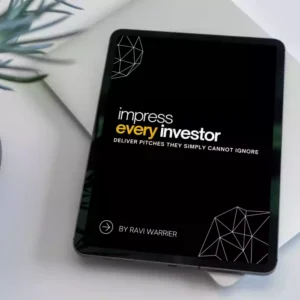TL;DR
Effectively presenting market opportunity in a pitch deck involves clarity, brevity, and providing essential statistics to communicate the market potential convincingly. Use bullet points, avoid jargon, and structure your presentation logically by starting with the problem and opportunity, followed by the solution, features, traction, timelines, competitive landscape, management team, and funding needs.
Understanding the Market Opportunity
The market opportunity slide in your pitch deck is crucial for attracting investors. This slide is where you highlight the potential market size, growth prospects, and why your company is well-positioned to capture a significant share of the market. To make this compelling, focus on clarity and brevity.
Investors are often bombarded with countless pitch decks, so it is essential to be concise. Avoid using complex language or industry jargon that might confuse them. Instead, use bullet points and short sentences to get your message across quickly.
For example, say your startup is developing an eco-friendly alternative to plastic packaging. You could start by mentioning the current problems with plastic waste and then outline the growing demand for sustainable packaging solutions. This approach helps establish the relevance of your product in the current market landscape.
Breaking Down the Market Opportunity
When discussing the market opportunity, it is vital to reference key statistics. These could include the total addressable market (TAM), serviceable available market (SAM), and serviceable obtainable market (SOM).
Here’s how you can break it down:
- TAM: The overall revenue opportunity if your product or service achieved 100% market share. For instance, the global packaging industry might be worth $1 trillion, representing the TAM.
- SAM: The segment of the TAM targeted by your products and services which are within your geographical reach. Let’s say eco-friendly packaging accounts for $200 billion.
- SOM: The portion of the SAM you realistically expect to capture, considering competition and your strategy. Aiming for a 5% share of the sustainable packaging market might give you a SOM of $10 billion.
The Problem and Opportunity
Begin your pitch deck by clearly defining the problem your company is addressing. Providing context is important for investors to understand the gap in the market that your product aims to fill. Once the problem is established, segue into the opportunity this problem presents.
For instance, if your startup offers a new diabetes management app, outline the challenges faced by diabetes patients—perhaps the inconvenience of frequent blood sugar monitoring. Then, highlight the opportunity: a growing number of diabetes patients worldwide seeking easier management solutions.
Use statistics to reinforce your points. For example, you might note that the number of diabetes patients globally is expected to rise from 463 million in 2019 to 700 million by 2045, showcasing a significant market potential for your solution.
The Solution and Features
After establishing the problem and opportunity, move on to presenting your solution. This is where you describe your product or service and its unique features.
For instance, if your solution is a diabetes management app, highlight features like continuous glucose monitoring, personalized diet plans, and real-time feedback to help patients manage their condition more effectively.
To make your slide more impactful, use visual aids like screenshots of your app or diagrams showing how it works. Investors should be able to clearly see how your solution addresses the problem in the market.
Traction and Timelines
Investors want to see evidence that your solution is gaining traction. Include any relevant metrics, such as user growth, revenue milestones, or strategic partnerships.
For example, you might highlight that your diabetes management app has already been downloaded by 100,000 users within six months of launch and has secured partnerships with major healthcare providers.
Additionally, outline your future growth plans with a clear timeline. Describe key milestones you aim to achieve, such as reaching 1 million downloads by the end of the next financial year or expanding into new markets.
Competitive Landscape and Management Team
Investors need to understand how your solution stands out in a competitive market. Provide an overview of the existing players and how they compare to your product. Highlight your unique selling points (USPs) and competitive advantages.
For example, if your app offers seamless integration with existing health monitoring devices, emphasize this as a USP. Use comparative charts to visually depict how your solution fares against the competition in critical areas.
Also, introduce your management team. Highlight their expertise, relevant experience, and how they are uniquely positioned to drive the company’s success. Mention key achievements and credentials that lend credibility to your leadership.
Funding Needs
Finally, clearly state your funding requirements. Explain how much capital you need, what you plan to use it for, and how it will help you achieve your growth targets.
Break down the funding utilization into categories like product development, marketing, hiring, and operational expenses. For instance, you might need $2 million to develop advanced features for your app, execute a marketing campaign to drive user acquisition, and expand your team.
Providing a clear and concise plan for the use of funds reassures investors that their investment will be used wisely and effectively to grow the company.
Reflective Questions
- Have you clearly defined the problem your product is addressing in your pitch deck?
- Are you using compelling statistics to highlight the market opportunity effectively?
- Does your solution section clearly convey how your product meets the market needs?
- Have you included evidence of traction to demonstrate your progress and potential?
- Did you address the competitive landscape and highlight your unique selling points?
- Is your funding requirement section detailed and focused on specific growth areas?
Next Steps
To move forward, ensure your pitch deck answers these essential questions and presents a compelling case for investment. Review each section critically and where possible, support your claims with data and real-world examples. As you refine your pitch deck, keep in mind the need for clarity and brevity to make a strong impression on potential investors. A well-structured pitch deck with a clear market opportunity can significantly enhance your chances of securing the funding you need for your startup’s growth. Good luck!









